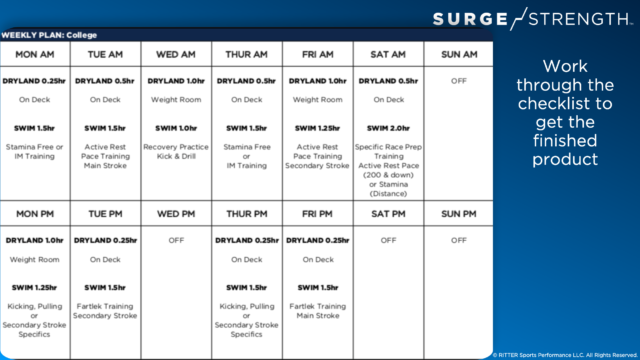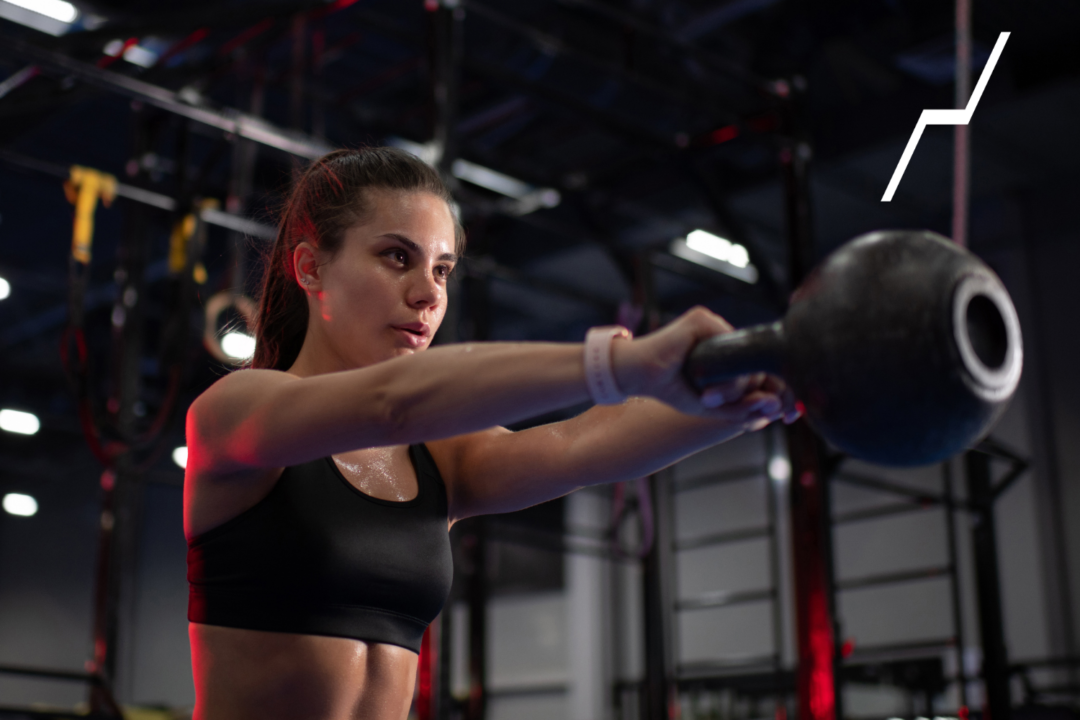Not everyone loves dryland like we do at SURGE Strength, and it takes time to change the swim culture at your pool, because it takes time for people to understand the value of a thriving dryland program.It can be challenging to get both your swimmers and coaching staff to enjoy a team dryland training program. As the experts in bringing this valuable training tool to teams and to athletes, we have firsthand experience of this, and understand any frustration you might be feeling around it.
At SURGE Strength, we help you find practical ways to incorporate dryland into your program without wasting time or effort. We help you build trust with other staff members as well as your athletes by keeping dryland simple, effective, and fun. Whether your dryland program needs a makeover, or this is your team’s first impression of dryland, our goal is to help you to be successful and get results. In addition, we hope to help you share your love for land-based training with everyone involved. Below, we unpack 5 easy ways to start winning people over to dryland.
Team Dryland Training Program Step #1 – Communicate with Staff
When incorporating something new into your swim program, it is imperative that everyone is on the same page. Find out what is important to other staff members. Learn what they care about when it comes to the team’s training plan and why. Furthermore, get a better picture of what the season looks like as a whole. For example, let’s say you are an assistant coach or even exclusively the dryland coach: you would need to know the training focus for each segment of the swim season. This way, the dryland program can better assist the swim program. Remember, the beauty of a periodized team dryland training program is that it compliments swim training rather than competing with it.
Listen below as dryland coach & enthusiast, Peter Hugh Drückes, explains how he plans dryland around the swim season in conjunction with the head coach. It’s worth mentioning that before he starts creating workouts, he familiarizes himself with holidays, meets, and other variables throughout the swim season. In turn, he builds buy-in from the staff and swimmers as he recognizes their schedules and needs.
Finally, involve the rest of the staff in deciding the details of both the dryland content and the dryland schedule. Asking for input helps get other coaches to buy into what you’re doing and helps them feel like they have responsibility with you over the dryland plan. Even if they don’t directly conduct dryland, they are more likely to feel as though they are contributing to the team’s success.
Team Dryland Training Program Step #2 – Create a System
In order to leave a positive impression on your swimmers and staff, you’ll need an organized system. Time and time again, we see dryland coaches picking random exercises they find on the internet and social media sites and then trying them the very same day with their team. This is not only a disservice to your swimmers, but it leaves you feeling stuck on what to do next as their coach. In place of throwing a flashy workout together, aim for a more consistent approach. Prioritize training goals into distinct phases that align with your team’s water-based training focus.
Break down your plan into 3 layers: a season plan, a weekly plan, and a daily session plan. Then, work backwards from the championship meet. This way, it’s easier to determine what your dryland should focus on most at various points in the season. Additionally, take time to collaborate with other coaches and parents about their preferences and priorities. Perhaps even write out a tentative dryland schedule to get everyone on the same page. During most of the season & off-season, aim for 3, 1 hour-long dryland sessions per week. If this isn’t possible yet, work with what you have. See our example below of how we map out a week of collegiate level dryland:

Team Dryland Training Program Step #3 – Make Training Adaptable
When your dryland plan is adaptable, it serves everyone on the team, including other coaches, parents, and swimmers. Likewise, it makes your plan more appealing and easier to navigate. Dryland is meant to compliment your athletes need in real time. Inevitably, unforeseen obstacles crop up. For instance, swimmers get injured or perhaps training schedules change. At times, meets get postponed or rescheduled. Therefore, dryland workouts should not be so structured that they cannot be changed and adapted as needed. Instead, have a general plan for each workout, but leave a margin of time and mental flexibility to change specific exercises and circuits.
One way to keep training adaptable is by scaling workouts to the different abilities on your team. SURGE Strength has a great resource on scaling dryland workouts. Here, we explain how to progress and regress exercises to keep dryland individualized when training large groups.
- Learn More: Level Up Dryland: The Secret Weapon to Individualizing Dryland Training (Even With a Group!)
Team Dryland Training Program Step #4 – Work off of a Baseline
Some people are motivated by more objective data rather than how they feel during a session. The best way to give your swimmers a reference point, or baseline to training, is through regular assessments. Conducting exercise assessments gives people numbers to work off and see their progress. It also reassures you, as the dryland coach, that your program is effective. Assessments should be conducted at the beginning, mid-point, and end of season at minimum. To learn more about the importance of assessments, check out our previous article.
Team Dryland Training Program Step #5 – Keep it Simple
Once you have a dryland plan ready to go, believe in the process and stay consistent. This is where your abilities as a coach have the most potential to win people over to dryland. Counterintuitively, some of the best dryland plans are also the simplest. The execution of the plan is what really elevates a swimmers training. We suggest hitting all 5 movement categories: pushing, pulling, squatting, hinging, and bracing in each dryland session. Then, be ready to scale the exercises accordingly.
On the other hand, avoid changing up exercises too frequently. Otherwise, you won’t know which exercises are yielding results. Instead, be consistent with your program and remember that sometimes, less is more. Below, Chris and Peter talk about the importance of simplifying a dryland plan where consistency is key to progressing exercise ability.
By following these 5 basic principles, you can implement team dryland training in a way that you and your team will enjoy. Likewise, your dryland program will appeal to parents and other coaching staff. Remember, start by collaborating to make a plan. Next, look at the bigger picture and create an adaptable system. Then, measure your results through frequent assessments. Finally, be consistent with your coaching. As a result, watch skeptics turn into dryland enthusiasts as you win them over to a flourishing dryland program, and faster results for your swimmers.
MORE DRYLAND RESOURCES FROM SURGE STRENGTH:
ENROLL IN A DRYLAND 101 COURSE FOR FREE
GET STARTED WITH A DRYLAND PROGRAM
LEARN ABOUT BECOMING SSDC

SURGE Strength’s Mission:
BUILD BETTER ATHLETES
GENERATE FASTER SWIMMERS
Courtesy of SwimSwam’s exclusive dryland training partner, SURGE Strength.
SURGE Strength is swim-specific, strength training by Chris Ritter. SURGE Strength builds better athletes and faster swimmers through Dryland Programs, Courses and Certification.










